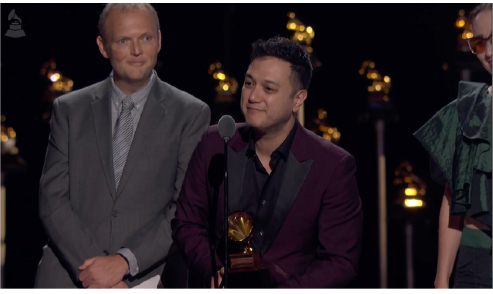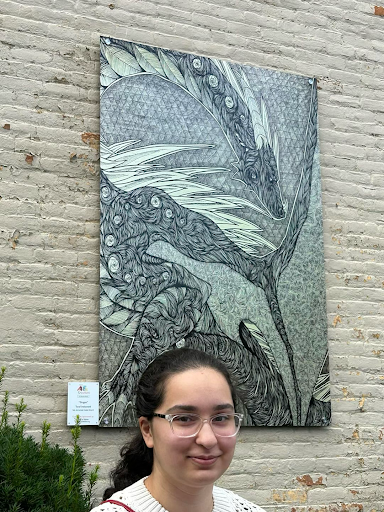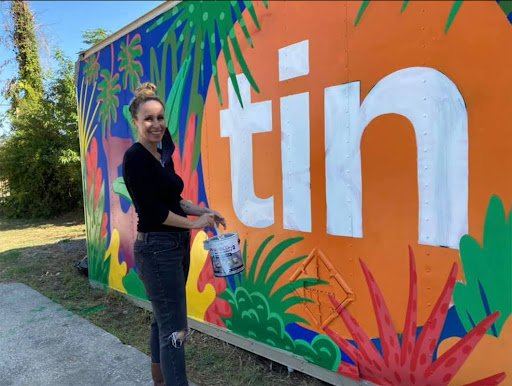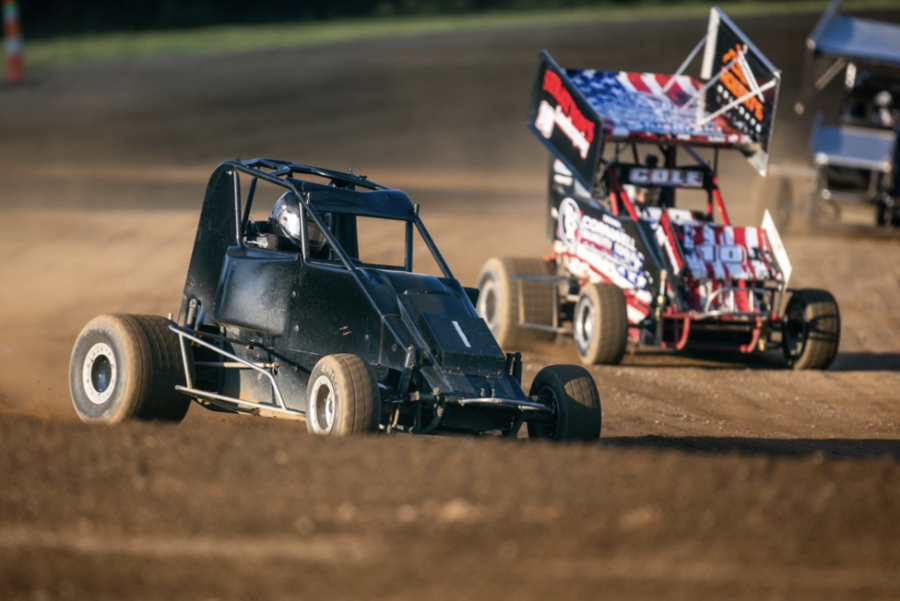Behind the wheel at age 14: Eighth-grader racing to the top
November 10, 2022
For most Americans, race car driving is a new phenomenon thanks to the Netflix series Formula 1: Drive to Survive, but for Sam Webster ‘27, it has always been a big part of his life. Webster grew up watching his dad race, and he started racing when he was ten.
“I would always see race cars in the garage, and I thought it was so cool,” Webster said. “I went to Road America to see him drive a sports car. I was so amazed and I wanted to be a part of it.”
From then on, Webster began racing with his dad.
“It’s really special,” Webster said. “He got me into racing and we get to learn from each other about our cars, about the track, and we can also have fun together.”
Webster races at Jackson Speedway, a car racing track in Jackson, in a micro sprint with a shifter and a 150 horsepower, four cylinder motorcycle engine.
“It’s [the four cylinder engine] not like your normal V12,” Webster said. “It’s not as fast statistically, but on the track you fly because it’s so light.”
Webster takes care of his micro sprint himself by cleaning it the day after a race and making sure everything is running smoothly. Caring for his car has its benefits on and off of the track.
“I’ve learned about how a tire pressure adjustment can change everything,” Webster said. “It changes the way you race and how it feels.”
Because the nearest race track is forty minutes away, Webster does not get to practice in person everyday. Instead, he uses a simulator and plays racing video games like iRacing or F1 for at least an hour each day at home.
Webster uses this practice to help him in his competitive races.
“There’s the championship on the line, so obviously there’s some competitiveness and seriousness to it, but there’s also lots of fun,” Webster said.
He raced competitively three times this past summer at Jackson Speedway and hopes to increase that number this upcoming season, with more races in Indiana.
“A lot of people think that Michigan is a big racing state, but it’s really not,” Webster said. “ There aren’t many tracks here, but in Indiana, there’s one in almost every county.”
Webster hopes to eventually have a career in motorsports as a team owner for either Formula One, NASCAR, or IndyCar. One of his inspirations is Rick Hendrick, the winningest team owner in NASCAR of all time.
“I think he’s done a great job and I want to be like him because he’s truly inspiring,” Webster said.
Another inspiration of Webster’s is CEO of McLaren Racing Zak Brown.
“I really like him,” Webster said. “I was in California this past summer and I got to meet him. I told him I race and he was super nice.”
Because of this experience with Brown, McLaren is Webster’s favorite Formula One (F1) team.
“I like their colors, I like their logo, and I like their drivers,” Webster said. “My favorite driver is Daniel Riccairdo. I think he’s a goofy guy.”
English Teacher Danielle Conti agrees.
“Danny Ric is one of my faves,” Conti said. “He hasn’t been driving well, he just got replaced so he’s not driving next season, but he’s the most likable person ever.”
Conti got into F1 through Formula 1: Drive to Survive, a Netflix docudrama.
“The show gives American viewers that sense of competition, which got us into a sport that so many of us knew nothing about,” Conti said.
After binge-watching the first season per her husband’s suggestion, by the next live race, she was all in.
“I was tracking the drivers,” Conti said. “I followed them on Instagram so I would know how they would prepare for each race and I started to learn that certain drivers take up certain social causes.”
Conti’s favorite driver is Lewis Hamilton, a popular choice, as he has the most wins in F1 history.
“Lewis Hamilton always makes a statement when he’s interviewed, which riles people up, but I love that he’s taking a stance on social issues.”
Actions like these make fans feel more connected to their favorite drivers, which draws more and more people to the sport.
“Sports have a way of building community,” Conti said. “I wouldn’t necessarily define myself as a sports fan, but F1 feels different (…) the base for the driver or the team is so large and so present on social media, especially now [since Drive to Survive came out] that it builds a sense of community where if you didn’t feel like you were a part of sports, it makes you feel like you’re a part of something.”
Science Teacher Alvaro Salcedo, who has been a F1 fan his whole life, has always felt that sense of community. Salcedo had a poster of F1 racer Mario Andretti racing in the ‘70s in his childhood bedroom.
“Growing up in Spain, Formula One was a permanent feature,” Salcedo said. “Races are at three p.m. on Sundays, typically, so we would watch them after lunch. In the early 2000s, Fernando Alonso won two world championships and all of a sudden Formula One became very popular in Spain. Now it definitely seems like it’s catching on in America.”
Webster has noticed this increase of interest in the sport recently, which he credits to Drive to Survive.
“I think it grew because a lot of people saw the celebrityness of these young drivers,” Webster said. “They saw how much work it is, how intense it is, the backgrounds of how hard it is to get into racing, how the teams work, they learned about the different race tracks, and the drama, a whole lot of drama.”
Because there are not very many kids who race, Webster appreciates that his friends have started talking about F1 and watching the show.
“I have some friends who talk about Formula One,” Webster said. “They’re interested in it and they know a lot. I think it’s pretty cool how the sport is growing in the U.S.. Due to Drive to Survive, they’re having races in Miami, Las Vegas next year, they have a track in Texas, maybe Indianapolis at some point.”
Because each new season of the show takes a full year to film, F1 fans watch the races live, waiting to get a peak behind the curtain when the new season drops.
“Now I’m in my third real F1 season and I understand even what a chicane is and which tracks are harder, or easier, or better for certain cars,” Conti said. “I’ve become a fluent F1 speaker.”


















